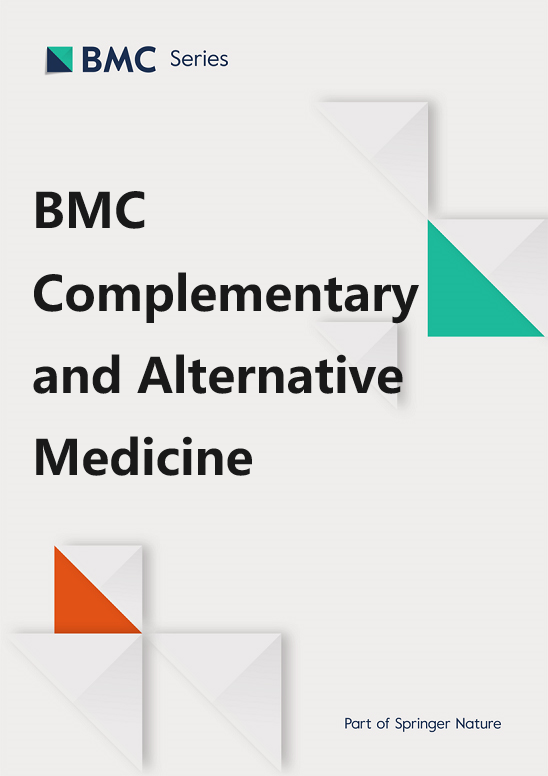远志提取物对 "Shimetere "患者伤口样本细菌分离物的植物化学筛选和抗菌活性
IF 3.4
2区 医学
Q1 Medicine
引用次数: 0
摘要
古拉格社区的 "shimetere "患者认为 "使用肠外药物会严重加重病情",因此不选择现代药物。因此,远志(Polygala sadebeckiana Gürke)的根部通常被用作治疗这种疾病的传统药物。本研究旨在评估远志提取物对从 "Shimetere "患者伤口样本中分离出的细菌的抗菌活性。实验采用琼脂井扩散法评估抗菌活性,并利用琼脂稀释法测定最低抑菌浓度(MIC)和最低杀菌浓度(MIC)。以 25、50、75 和 100 毫克/毫升的浓度对粗提取物进行抗分离细菌试验,一式三份(3x)。阳性对照为阿奇霉素(15 µg)和氯唑西林片(5 µg),阴性对照为二甲基亚砜(5%)。各组均值比较采用单因素方差分析,显著性水平为 p <0.05,结果以均值 ± 标准差表示。通过标准检测程序检查粗提取物中是否存在次生代谢物。从 9 个(60%)和 3 个(20%)伤口样本中分别鉴定出金黄色葡萄球菌和化脓性葡萄球菌。所有鉴定出的细菌菌株都对参考抗生素敏感。单宁和皂苷是粗提取物中最丰富的次生代谢物。浓度为 100、75、50 和 25 mg/mL 的植物提取物对金黄色葡萄球菌的平均抑菌区分别为 27、20.33、15.25 和 11.96 mm(p < 0.000),对化脓性葡萄球菌的平均抑菌区分别为 30.02、24.50、19.07 和 15.77 mm(p < 0.000)。粗提取物对金黄色葡萄球菌的 MIC 和 MBC 分别为 1.67 毫克/毫升和 10 毫克/毫升,对热原菌的 MIC 和 MBC 分别为 0.98 毫克/毫升和 4 毫克/毫升。远志(Polygala sadebeckiana Gürke)含有大量鞣质和皂苷作为次生代谢产物,对从 "Shimetere "中分离出的细菌(金黄色葡萄球菌和化脓性葡萄球菌)具有抗菌活性。该植物提取物的潜在抗菌机制是抑制细胞壁合成。本文章由计算机程序翻译,如有差异,请以英文原文为准。
Phytochemical screening and antimicrobial activity of Polygala sadebeckiana Gürke extracts on bacterial isolates from Wound samples of patients with “Shimetere”
Modern medicine is not the choice of patients with “shimetere” in the Gurage community owing to their perception of ‘parenteral medication use severely aggravates the disease’. For this reason, the root part of Polygala sadebeckiana Gürke is commonly utilized as traditional medicine in the management of the disease. The aim of this study was to evaluate the antimicrobial activity of Polygala sadebeckiana Gürke extract on bacterial isolates from wound samples of patients with “Shimetere”. The agar well diffusion method was used to evaluate antibacterial activity, and the agar dilution method was utilized to determine minimum inhibitory concentrations (MICs) and minimum bactericidal concentrations (MICs). The crude extract was tested against isolated bacteria at concentrations of 25, 50, 75 and 100 mg/mL in triplicate (3x). The positive controls were azithromycin (15 µg) and cloxacillin disk (5 µg), and the negative control was dimethylsulfoxide (5%). The group mean comparisons were made using one-way ANOVA at a significance level of p < 0.05, and the results are presented as the mean ± standard deviation. The presence of secondary metabolites from crude extract was checked by standard testing procedures. S. aureus and S. pyrogen were the two identified bacteria from 9 (60%) and 3 (20%) wound samples, respectively. All identified bacterial strains were susceptible to the reference antibiotics. Tannins and saponins were the most abundant secondary metabolites found in the crude extracts. The average inhibition zones of the plant extracts with 100, 75, 50 and 25 mg/mL concentrations were 27, 20.33, 15.25, and 11.96 mm (p < 0.000) for S. aureus and 30.02, 24.50, 19.07, and 15.77 mm (p < 0.000) for S. pyrogen bacteria, respectively. The MIC and MBC of the crude extract were 1.67 and 10 mg/mL for S. aureus and 0.98 and 4 mg/mL for S. pyrogen. Polygala sadebeckiana Gürke contained significant tannins and saponins as secondary metabolites and had antibacterial activities against isolated bacteria (S. aureus and S. pyrogen) from “Shimetere”. The potential mechanism of antibacterial action of the plant extract was cell wall synthesis inhibition.
求助全文
通过发布文献求助,成功后即可免费获取论文全文。
去求助
来源期刊

BMC Complementary and Alternative Medicine
INTEGRATIVE & COMPLEMENTARY MEDICINE-
CiteScore
7.00
自引率
0.00%
发文量
0
审稿时长
3 months
期刊介绍:
BMC Complementary Medicine and Therapies is an open access journal publishing original peer-reviewed research articles on interventions and resources that complement or replace conventional therapies, with a specific emphasis on research that explores the biological mechanisms of action, as well as their efficacy, safety, costs, patterns of use and/or implementation.
 求助内容:
求助内容: 应助结果提醒方式:
应助结果提醒方式:


